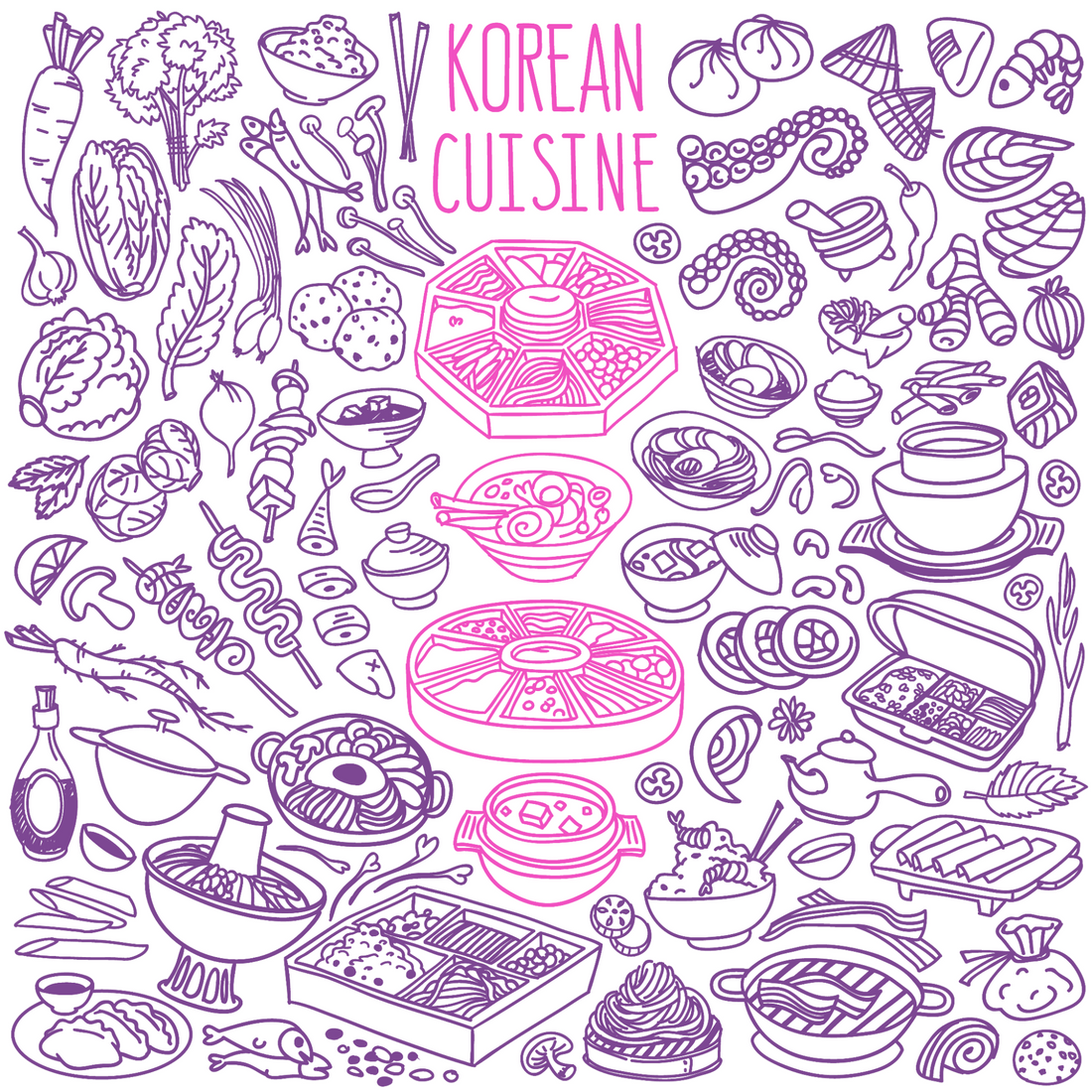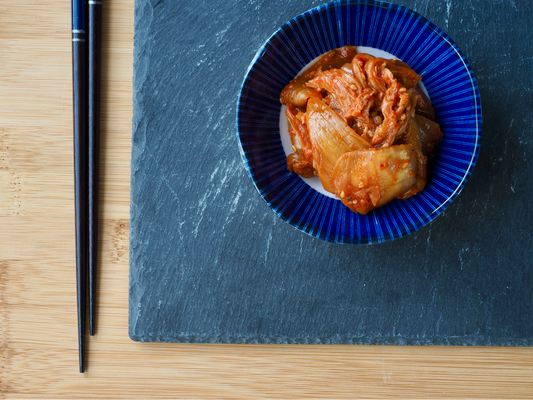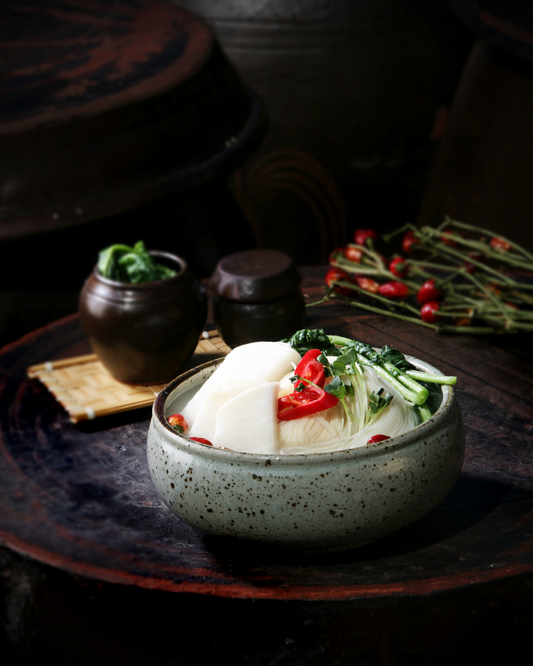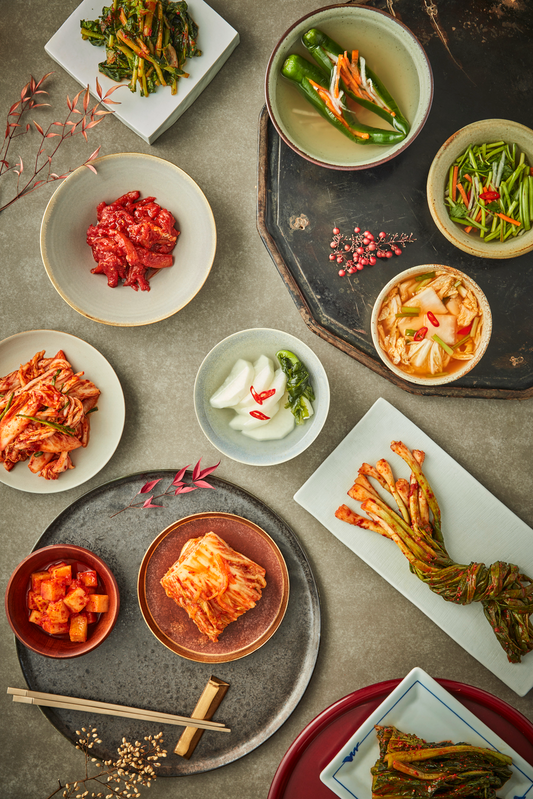What is Kimchi? Its Origin, Development Process, and Significance in Traditional Korean Cuisine

At the center of Korean culture, a dish sparked national debates over price increases. This dish even got its variant for space travel. Korean food culture treasures Kimchi for its deep roots in the country's past. It's not just a spicy add-on. Kimchi symbolizes Korean heritage. Looking into the origin of kimchi reveals deep tradition, community, and culinary creativity. This goes beyond traditional Korean cuisine.
The practice of kimjang gained international recognition from UNESCO. There are countless kimchi types across Korea. These stories of traditional kimchi take us through history and flavors. Let's explore the kimchi origin, how it's made, and why it's so important. What makes this simple dish a symbol of national identity and global fascination?
Key Takeaways
- Kimchi stands as a pivotal dish in Korean food culture, with numerous variations dating back to agricultural traditions.
- The creation of kimchi goes back to fermenting vegetables during winter. This method has been used for centuries.
- Chili peppers became a part of kimchi in the 19th century. This was despite an earlier mention in 1614.
- In 2008, "space kimchi" was made for a Korean astronaut. This shows how vital kimchi is to Korean culture.
- Korea has strongly opposed kimchi production in Japan. The 2010 "kimchi crisis" underlines the dish's cultural importance.
- UNESCO has recognized kimjang, the seasonal tradition of making kimchi, as crucial cultural heritage.
- Kimchi's international fame has risen, sparking discussions about culture and standards worldwide.

Definition of Kimchi
Kimchi is more than just a dish; it's a key part of Korean culture. It's found in every Korean meal, bringing a rich blend of flavors and textures. From stews to pancakes, kimchi's complex taste shines through. Let's take a closer look at what makes kimchi so special.
What is Kimchi?
Kimchi combines fermented veggies like napa cabbage and radish with spices such as chili powder and garlic. This mix goes through lacto-fermentation. It becomes a tangy, flavorful addition to many meals. Kimchi is also packed with health benefits, including vitamins, minerals, and probiotics.
Main Ingredients of Kimchi and Basic Preparation Process
The taste of kimchi starts with napa cabbage and Korean radish. They are salted and brined before fermentation. Next, a paste of ginger, onion, and sometimes fish sauce or fermented shrimp is made. This paste is then mixed with the vegetables.
This preparation reflects the tradition of kimchi. It introduces the spicy, sour, and umami flavors kimchi is known for. Kimchi's recipe can change based on the region and season. You can find kimchi in homes and stores worldwide, bringing a piece of Korea to your plate.

The Origin of Kimchi
When we dive into kimchi history, we discover its deep roots in Korea's past. It started during the Three Kingdoms period. This era saw the birth of early forms of kimchi, mainly to keep vegetables during cold winters. These initial versions were basic, mainly salted, and not spicy like today's kimchi.
Historical Background of Kimchi's Origin
Kimchi dates back to ancient times when people needed it to survive. The oldest kimchi was made from radishes soaked in paste or salt water. This method helped store veggies for the winter and kept people healthy all year.
The Early Form of Kimchi and Its Evolution
As Korea began trading, new ingredients like Chinese cabbage entered the scene in the late 19th century. Kimchi recipes changed with the arrival of red chili peppers, thanks to trade and colonization. This turned kimchi into a dish with a mix of spicy, sweet, and umami flavors.
This change shows cultural significance of kimchi in Korea. Each ingredient and method tells a story of Korea's history and culture. What started as a way to preserve food has become a symbol of Korean identity, cherished around the world.
Learning about its beginnings and how recipes evolved is intriguing. It shows not just the history of a dish but also the culture's resilience and vibrancy. Kimchi's journey from ancient times to now tells Korea’s rich culinary story.

The Development of Kimchi
The story of kimchi is full of cultural blends and food evolutions. A key chapter in this tale is the Joseon Dynasty kimchi. It played a major role in the growth of this beloved Korean food.
Changes in Kimchi During the Joseon Dynasty
The Joseon Dynasty was crucial for Korean culture. During this time, the variety of kimchi grew due to new ingredients and local tastes. Texts like Jeungbo sallim gyeongje show how kimchi recipes began to change. Korea’s culinary history was enriched with new veggies and better fermenting ways, creating over 200 types of kimchi. Each had its own taste and fermenting method. Later, the introduction of chili peppers in the late 16th century added new flavors. This started a shift towards the kimchi we know today.
The Development of Kimchi in Modern and Contemporary Times
The 20th and 21st centuries brought more changes for kimchi. With societal and technological advancements, kimchi turned into a symbol of tradition and modernity. “Space kimchi” was made for astronauts, showing kimchi’s modern twist. The global love for Korean culture put kimchi in the spotlight. Foods like kimchi burgers and tacos show how it’s adapted worldwide. This has led to new ways of making kimchi. They respect its roots while appealing to tastes around the world.
Today, kimchi’s ongoing story is a testament to Korea's culinary heritage and its global impact. The mix of history, society, and technology plays a huge part. It's turned kimchi from a local food into a worldwide favorite.

Cultural Significance of Kimchi
Kimchi is far more than just a side dish. It represents a deep cultural heritage. In traditional Korean cuisine, it holds a prestigious place. This food has a history that stretches back thousands of years. It shows Korea's societal norms, historical ways of eating, and family practices. With over 70% of the market in Korea being baechu kimchi, its influence extends beyond taste. The "Kimchi Index" shows how its ingredient prices change, pointing to its economic impact.
The Position of Kimchi in Traditional Korean Cuisine
Kimchi is essential to Korean meals. It shows its constant importance and its role in Korean food traditions. The annual kimjang event highlights the community aspect of making kimchi. It's such a significant practice that since 2013, UNESCO has recognized it. This recognition puts kimchi at the heart of Korean culture.
Cultural Symbolism of Kimchi
Kimchi's symbolism speaks to the Korean principle of living in harmony with nature. It shows the wisdom of ancestors in its recipes. Traditional onggi pots and jangdokdae terraces are not just for storage. They symbolize Korean adaptability through the seasons. Kimchi's symbolism extends globally, as seen with the Kimchi Bus project. This bus visited 32 countries to share Korean culture and food. It shows kimchi as more than a dish. It's a global symbol of Korean heritage and culinary diplomacy.
FAQ
What is Kimchi?
Kimchi is a well-loved Korean side dish. It's made from salted and fermented veggies, like napa cabbage and Korean radish. It's spiced up with chili pepper, garlic, ginger, and scallions. This dish is a key part of Korean meals and is famous for its taste and health benefits.
Can you explain the kimchi origin and its historical development?
Kimchi started during Korea's Three Kingdoms period, beginning as simple salted vegetables. It has changed a lot since then, especially after chili peppers were added in the Joseon Dynasty. Over the years, kimchi has developed into the many varieties we enjoy today.
What are the main ingredients and the basic preparation process of kimchi?
The main ingredients are napa cabbage or Korean radish, and spices like salt, garlic, ginger, and chili pepper. You'll also find carrots and spring onions. To make kimchi, you salt and brine the veggies, coat them with spice paste, and then ferment them. This can take days or months, depending on the taste you want.
What changes did kimchi undergo during the Joseon Dynasty?
In the Joseon Dynasty, kimchi changed a lot. Chili peppers made it spicy. More vegetables meant more recipe creativity. Seasoning and fermenting methods also improved, leading to new flavors, shapes, and textures.
How has kimchi evolved in modern times?
Today, kimchi is still changing. There's even a version for astronauts called "space kimchi"! Its production has become more efficient thanks to better technology. But, it still stays true to traditional methods.
What is the position of kimchi in traditional Korean cuisine?
Kimchi is essential in Korean food. It goes with nearly all meals and is vital for their flavor. It's more than a dish; it represents Korea's culinary history and culture.
What does kimchi symbolize in Korean culture?
In Korea, kimchi is a symbol of unity, tradition, and longevity. Making it is a communal activity that shows cooperation. Its preservation reflects living in harmony with nature. Sharing kimchi strengthens family bonds and celebrates cultural heritage.







